Topic groups of invertebrate animals: Embark on a fascinating journey through the world of invertebrates, a realm teeming with incredible diversity and astonishing adaptations. From intricate coral reefs to the mysterious depths of the ocean, these creatures play vital roles in Earth"s ecosystems.
Table of Content
- What are the different groups of invertebrate animals?
- Understanding Invertebrates: Definition and Characteristics
- Major Phyla of Invertebrates: An Introduction
- Arthropods: Diversity and Significance
- Mollusks: Characteristics and Types
- Annelids: The World of Segmented Worms
- Cnidarians: Jellyfish, Corals, and Relatives
- YOUTUBE: Invertebrate Animals for Kids: Arthropods, Worms, Cnidarians, Mollusks, Sponges, Echinoderms
- Echinoderms: Starfish and Their Kin
- Platyhelminthes: Flatworms and Their Adaptations
- Nematodes: Understanding Roundworms
- Poriferans: Exploring Sponges
- Role of Invertebrates in Ecosystems
- Conservation Issues: Threats to Invertebrate Populations
What are the different groups of invertebrate animals?
Invertebrate animals are a diverse group that does not possess a vertebral column or backbone. They can be classified into several different groups based on their characteristics. Here are some of the major groups of invertebrate animals:
Arthropods:
Arthropods are the largest group of invertebrates, with over a million known species. They have segmented bodies, jointed limbs, and an exoskeleton made of chitin. Examples of arthropods include insects, spiders, crustaceans, and millipedes.
Mollusks:
Mollusks are a diverse group of invertebrates with soft bodies, usually covered by a hard shell. They include animals such as snails, clams, squid, and octopuses. Mollusks can be found in various habitats, including oceans, freshwater, and land.
Annelids:
Annelids are segmented worms that include earthworms and leeches. They have elongated bodies divided into repeated segments. Annelids play important roles in soil health and decomposition.
Echinoderms:
Echinoderms are marine animals characterized by radial symmetry and spiny skin. They include starfish, sea urchins, and sea cucumbers. Echinoderms are exclusively marine and are often found in shallow coastal areas.
Cnidarians:
Cnidarians are a diverse group of aquatic animals that include jellyfish, corals, and sea anemones. They have a simple body plan with specialized stinging cells called cnidocytes.
Poriferans:
Poriferans, also known as sponges, are simple multicellular organisms that filter feed on microscopic particles in the water. They have a porous body structure and are found in both freshwater and marine environments.
These are just a few examples of the different groups of invertebrate animals. Each group has its unique characteristics and plays important roles in ecosystems around the world.
READ MORE:
Understanding Invertebrates: Definition and Characteristics
Invertebrates, representing a vast majority of animal species, are distinguished by their lack of a vertebral column or internal bone skeleton. This diverse group encompasses various life forms ranging from single-celled protozoans to complex multicellular organisms like arthropods and mollusks.
- Body Structure: Invertebrates exhibit a wide array of body plans. Some, like jellyfish and worms, possess hydrostatic skeletons filled with fluid, while others, such as insects and crustaceans, have hard exoskeletons.
- Major Groups: Key groups include Porifera (sponges), Cnidaria (jellyfish, corals), Platyhelminthes (flatworms), Nematoda (roundworms), Annelida (segmented worms), Mollusca (snails, octopuses), Echinodermata (starfish, sea urchins), and Arthropoda (insects, arachnids).
- Diversity: Arthropods form the largest group, with species like insects, spiders, and crustaceans. Mollusks, including snails and octopi, are also notably diverse.
- Environmental Roles: Invertebrates play crucial roles in ecosystems, such as pollination, soil aeration, and as part of food webs.
- Adaptations: These organisms have adapted to thrive in various environments, from deep oceans to terrestrial habitats. Some exhibit unique features like cnidocytes in cnidarians for prey capture or the regenerative abilities of starfish.
Understanding invertebrates is essential for appreciating the complexity and diversity of life on Earth, highlighting the intricate balance of ecosystems and the evolutionary marvels of nature.

Major Phyla of Invertebrates: An Introduction
Invertebrates, which make up a significant portion of Earth"s biodiversity, are classified into various phyla based on their distinct characteristics and evolutionary history.
- Porifera: Also known as sponges, these are simple, multicellular organisms that filter nutrients from water. They lack complex organs and nervous systems.
- Cnidaria: This group includes jellyfish, corals, and sea anemones, known for their stinging cells and a simple nervous system forming a nerve net.
- Platyhelminthes: Flatworms belong to this phylum. They are characterized by a flat body and lack a specialized respiratory and circulatory system.
- Nematoda: Roundworms in this category have a complete digestive system with a mouth and an anus, playing a crucial role in many ecosystems.
- Annelida: Segmented worms like earthworms and leeches, having a segmented body structure and a more developed nervous system.
- Mollusca: This diverse group includes snails, clams, and octopuses. They often have a muscular foot and some live in protective shells.
- Echinodermata: Sea stars and sea urchins are examples, known for their radial symmetry and a unique water vascular system for movement.
- Arthropoda: The largest phylum, including insects, arachnids, and crustaceans. They have a segmented body, exoskeleton, and jointed limbs.
Each of these phyla contributes uniquely to our understanding of life"s diversity, showcasing a range of evolutionary adaptations and ecological roles.
Arthropods: Diversity and Significance
Arthropods, forming the largest phylum in the animal kingdom, encompass a wide range of species, including insects, arachnids, and crustaceans. They are characterized by their segmented bodies, exoskeletons, and jointed limbs.
- Insects: The most numerous and diverse group of arthropods, insects have a significant impact on various ecosystems and human activities. They serve critical roles in pollination, decomposition, and as a food source for other animals.
- Crustaceans: This group includes animals like crabs, lobsters, and shrimp. They are primarily aquatic and play vital roles in marine ecosystems as both predators and prey.
- Arachnids: Including spiders and scorpions, arachnids are primarily known for their eight legs and contribute to controlling insect populations and decomposing organic matter.
Arthropods are not only ecologically essential but also have economic significance. Insects like bees are crucial for pollinating crops, while crustaceans are a key part of the seafood industry. Understanding the diversity and role of arthropods is vital for maintaining ecological balance and supporting human needs.

Mollusks: Characteristics and Types
Mollusks are a diverse and widespread group of invertebrates with unique characteristics. They are known for their soft bodies, which in many cases are protected by a hard shell. This phylum includes a variety of species such as snails, octopi, squid, and clams.
- Physical Structure: Most mollusks have a muscular foot for movement, a visceral mass containing most of their internal organs, and a mantle which secretes the shell in those species that have one.
- Shell: Many mollusks, like snails and clams, possess an external calcium carbonate shell. However, some, like octopuses and squids, have a reduced or absent shell.
- Diversity in Habitat: Mollusks are found in a wide range of environments from deep ocean floors to freshwater rivers and even terrestrial regions.
- Role in Ecosystems: Mollusks play critical roles in ecosystems, such as being a source of food for other animals, aiding in nutrient cycling, and, in the case of bivalves, filtering water.
- Economic Importance: Many species are vital to human economies, serving as food sources (e.g., oysters, clams) and in some cultures, their shells are used as currency or decorative items.
The study and understanding of mollusks are important not only for ecological balance but also for their economic and cultural significance to humans.
Annelids: The World of Segmented Worms
Annelids, commonly known as segmented worms, are a diverse group of invertebrates characterized by their segmented bodies. This phylum includes various species such as earthworms, leeches, and polychaete worms, each playing a significant role in their respective ecosystems.
- Body Structure: Annelids are distinguished by their segmented bodies, which are divided into identical sections. Each segment contains a set of organs and, in some species, can function independently.
- Habitat Diversity: These creatures inhabit a variety of environments, from terrestrial soils to freshwater and marine ecosystems, showcasing their adaptability.
- Role in Ecosystems: Earthworms, for instance, are vital for soil health as they aerate the soil and aid in decomposing organic matter. Leeches have medical applications, especially in microsurgery.
- Reproduction: Many annelids are capable of both sexual and asexual reproduction, with some species exhibiting remarkable regenerative abilities.
- Ecological Importance: Annelids contribute significantly to nutrient cycling in their habitats and serve as a food source for various animals, thus playing a crucial role in maintaining ecological balance.
Annelids, with their unique characteristics and significant ecological roles, are an essential group of invertebrates, offering insights into the complexity of life and the functioning of ecosystems.

Cnidarians: Jellyfish, Corals, and Relatives
Cnidarians, a distinct group of invertebrates, are known for their unique characteristics and include species such as jellyfish, corals, and sea anemones. They are predominantly marine animals and have a significant impact on marine ecosystems.
- Body Structure: Cnidarians are recognized for their radially symmetrical body structure. They typically have a mouth surrounded by tentacles that contain cnidocytes, specialized cells used for capturing prey.
- Reproduction: Many cnidarians can reproduce both sexually and asexually. For example, corals often reproduce by releasing eggs and sperm into the water, while some jellyfish species can reproduce asexually through budding.
- Habitats: While most cnidarians are marine, a few species inhabit freshwater environments. Corals are particularly known for forming extensive reefs, which are vital habitats for a multitude of marine species.
- Role in Ecosystems: Cnidarians play crucial roles in marine ecosystems. Coral reefs provide habitat and protection for numerous marine organisms, and jellyfish are important predators and prey within their food webs.
- Stinging Mechanism: Cnidarians are well-known for their stinging cells, cnidocytes, which are used for defense and capturing prey. This feature is particularly prominent in jellyfish and sea anemones.
The study of cnidarians offers valuable insights into marine biodiversity and ecosystem dynamics, highlighting the complexity and beauty of aquatic life.
Invertebrate Animals for Kids: Arthropods, Worms, Cnidarians, Mollusks, Sponges, Echinoderms
Prepare to be amazed as you delve into the fascinating world of arthropods in this captivating video. Discover the incredible diversity of these tiny creatures and witness their incredible adaptations in action. Get ready for a mind-blowing journey through the intricate world of arthropods!
Animal Groups: Vertebrates and Invertebrates
Dive into the mesmerizing universe of vertebrates through this awe-inspiring video. From majestic mammals to graceful birds and captivating reptiles, join us on an epic adventure exploring the remarkable characteristics and behaviors of these incredible creatures. Prepare to be enthralled by the wonders of the vertebrate world!
Echinoderms: Starfish and Their Kin
Echinoderms, a unique and diverse group of marine invertebrates, include well-known species like starfish, sea urchins, and sea cucumbers. These organisms are particularly noted for their radial symmetry and a water vascular system that aids in movement and feeding.
- Radial Symmetry: Echinoderms are characterized by their radial body plan, which typically involves five or more arms or rays emanating from a central disc.
- Water Vascular System: This system, unique to echinoderms, consists of a network of hydraulic canals and tube feet that facilitate locomotion, feeding, and gas exchange.
- Regeneration Abilities: Many echinoderms, especially starfish, have remarkable regenerative abilities, allowing them to regrow lost arms and, in some cases, entire bodies from a single limb.
- Ecological Role: Echinoderms play significant roles in marine ecosystems, particularly in nutrient cycling and as prey for various marine animals.
- Habitats: They are found in a wide range of marine environments, from shallow tidal pools to the deep sea, adapting to various ecological niches.
The study of echinoderms provides valuable insights into marine biology, ecology, and the evolutionary process of radial symmetry in animals.

Platyhelminthes: Flatworms and Their Adaptations
Platyhelminthes, commonly known as flatworms, are a group of invertebrates with distinct characteristics and adaptations. This group includes various forms, ranging from free-living species to parasitic ones, like tapeworms and flukes.
- Body Structure: Flatworms are known for their flattened bodies, which facilitate gas exchange and nutrient distribution in the absence of a specialized respiratory and circulatory system.
- Parasitic Adaptations: Many flatworms, such as tapeworms and flukes, are parasites, adapting to life inside hosts. They often have suckers or hooks for attachment and can have complex life cycles involving multiple hosts.
- Reproductive Strategies: Flatworms exhibit a range of reproductive strategies, including both sexual and asexual reproduction. Some are hermaphrodites, containing both male and female reproductive organs.
- Regeneration: Some flatworms, particularly free-living species, have remarkable regenerative abilities, allowing them to regrow lost parts or even form new individuals from fragments.
- Ecological Role: While parasitic flatworms can be harmful to their hosts, free-living flatworms play roles in ecosystems as predators or decomposers.
Understanding the diverse adaptations of flatworms enhances our knowledge of invertebrate biology and the complexity of parasitic life cycles.
Nematodes: Understanding Roundworms
Nematodes, also known as roundworms, are a diverse group of invertebrates that play significant roles in various ecosystems. They are characterized by their cylindrical, worm-like bodies and can be found in a range of environments, from soil to aquatic habitats.
- Physical Characteristics: Nematodes are elongated with a smooth, non-segmented body surface. They range from microscopic to several meters in length, depending on the species.
- Ecological Diversity: Some nematodes are free-living, feeding on bacteria, fungi, or small particulate organic matter, while others are parasitic, affecting plants, animals, and even humans.
- Reproduction: Many nematodes reproduce quickly and in large numbers, which can make them formidable pests in agricultural settings or significant parasites in medical contexts.
- Soil Health: In soil ecosystems, nematodes play a crucial role in nutrient cycling and decomposition processes, contributing to soil health and fertility.
- Medical and Agricultural Impact: Parasitic nematodes can cause diseases in humans, livestock, and crops, leading to significant economic and health challenges.
The study of nematodes provides valuable insights into biodiversity, ecology, and the health of both natural and agricultural systems.

Poriferans: Exploring Sponges
Poriferans, commonly known as sponges, are fascinating members of the invertebrate community. These simple organisms are primarily marine and known for their porous bodies and unique feeding mechanisms.
- Basic Structure: Sponges are characterized by their porous bodies and a lack of true tissues and organs. They have a unique feeding system wherein water flows through their pores, bringing in nutrients and oxygen.
- Habitats: Most sponges are found anchored to the seabed in both shallow and deep waters. They can thrive in a variety of marine environments.
- Reproduction: Sponges can reproduce both sexually and asexually. Asexual reproduction often occurs through budding, while sexual reproduction involves the release of sperm into the water column.
- Ecological Role: Sponges play a crucial role in marine ecosystems. They act as filters, cleaning the water, and also serve as habitats for various small marine organisms.
- Diversity: There are approximately 9,000 known species of Porifera, each adapted to specific environmental conditions.
Studying sponges provides insights into the evolution of multicellular organisms and the ecological dynamics of marine ecosystems.
Role of Invertebrates in Ecosystems
Invertebrates, which comprise the majority of animal species on Earth, play critical roles in various ecosystems. Their contributions are diverse and essential to the stability and functioning of both terrestrial and aquatic environments.
- Pollination: Insects like bees and butterflies are crucial for the pollination of many plants, including crops vital to human agriculture.
- Decomposition: Many invertebrates, such as earthworms and certain insects, help in decomposing organic matter, thus enriching soil fertility and aiding nutrient cycling.
- Food Web Dynamics: Invertebrates serve as a vital food source for many higher organisms, including birds, mammals, and fish, thereby maintaining the balance of food webs.
- Biological Indicators: Certain invertebrates are used as bioindicators to assess the health of ecosystems, particularly in aquatic environments.
- Soil Aeration and Mixing: Soil-dwelling invertebrates like earthworms aerate the soil and enhance its nutrient content, benefiting plant growth.
- Disease Control: Some predatory invertebrates help in controlling populations of pest species, including those harmful to human interests.
Understanding the roles of invertebrates is crucial for conservation efforts and for maintaining the delicate balance of our ecosystems.
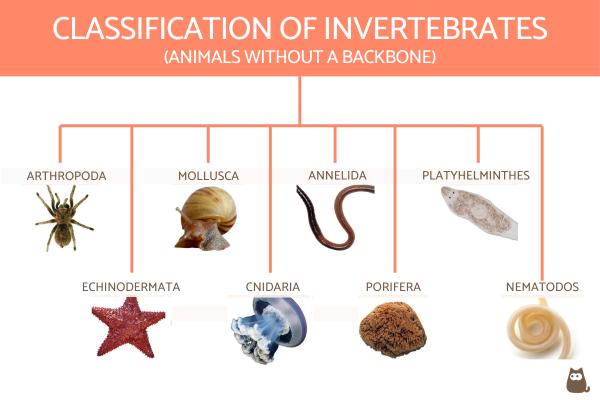
READ MORE:
Conservation Issues: Threats to Invertebrate Populations
Invertebrate species, despite their abundance and diversity, face significant threats globally. Conservation efforts are crucial to safeguard these species and maintain ecological balance.
- Habitat Loss: The most significant threat to invertebrates is habitat destruction and fragmentation, often due to human activities such as urbanization, agriculture, and deforestation.
- Pollution: Pollution in various forms, including chemical, noise, and light pollution, adversely affects invertebrate populations, disrupting their natural behaviors and habitats.
- Climate Change: Global climate change impacts invertebrate species through alterations in their habitats, food sources, and reproductive cycles.
- Overexploitation: Overfishing, hunting, and collection for trade or scientific research have led to the decline of numerous invertebrate species.
- Invasive Species: The introduction of non-native species can disrupt local ecosystems, leading to competition, predation, or disease, adversely affecting native invertebrates.
- Pesticides and Agricultural Chemicals: The widespread use of pesticides and other chemicals in agriculture harms invertebrates, particularly pollinators like bees and butterflies.
Addressing these threats through conservation strategies, habitat protection, and sustainable practices is vital for the survival of invertebrate species and the health of global ecosystems.
Exploring the diverse world of invertebrate animals reveals a fascinating tapestry of life that forms the backbone of our ecosystems. Their vital roles, from pollinators to decomposers, underscore the importance of conservation efforts to preserve the intricate balance of nature.

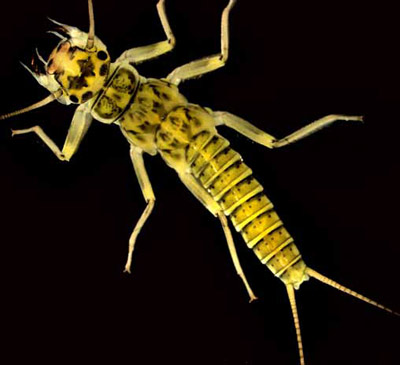



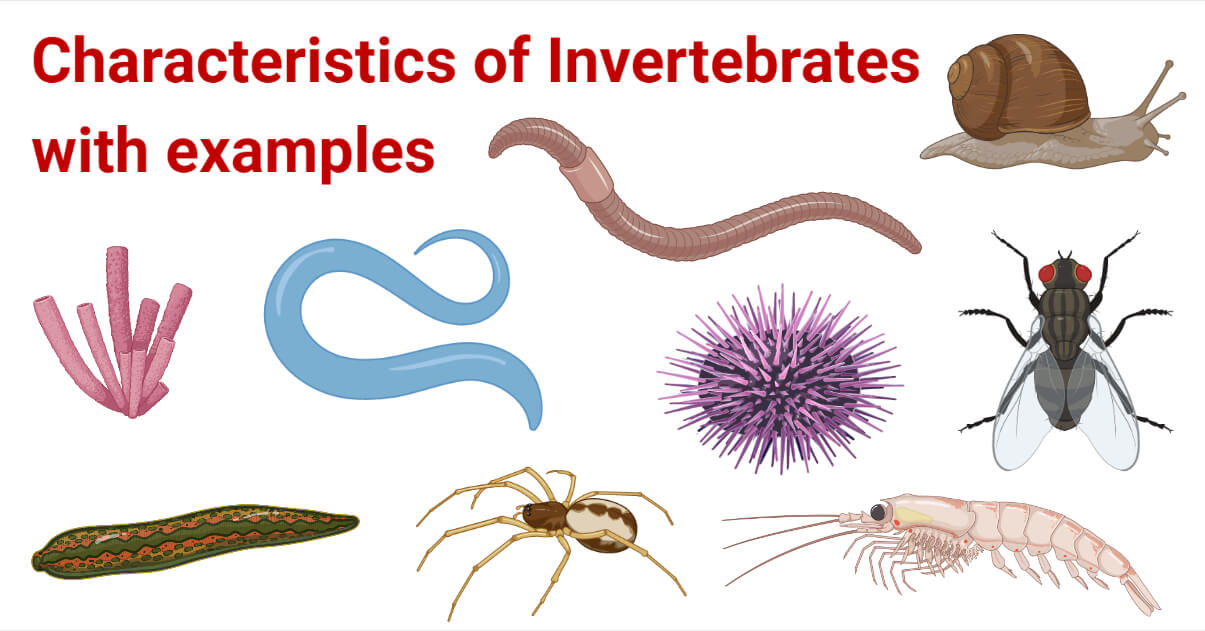
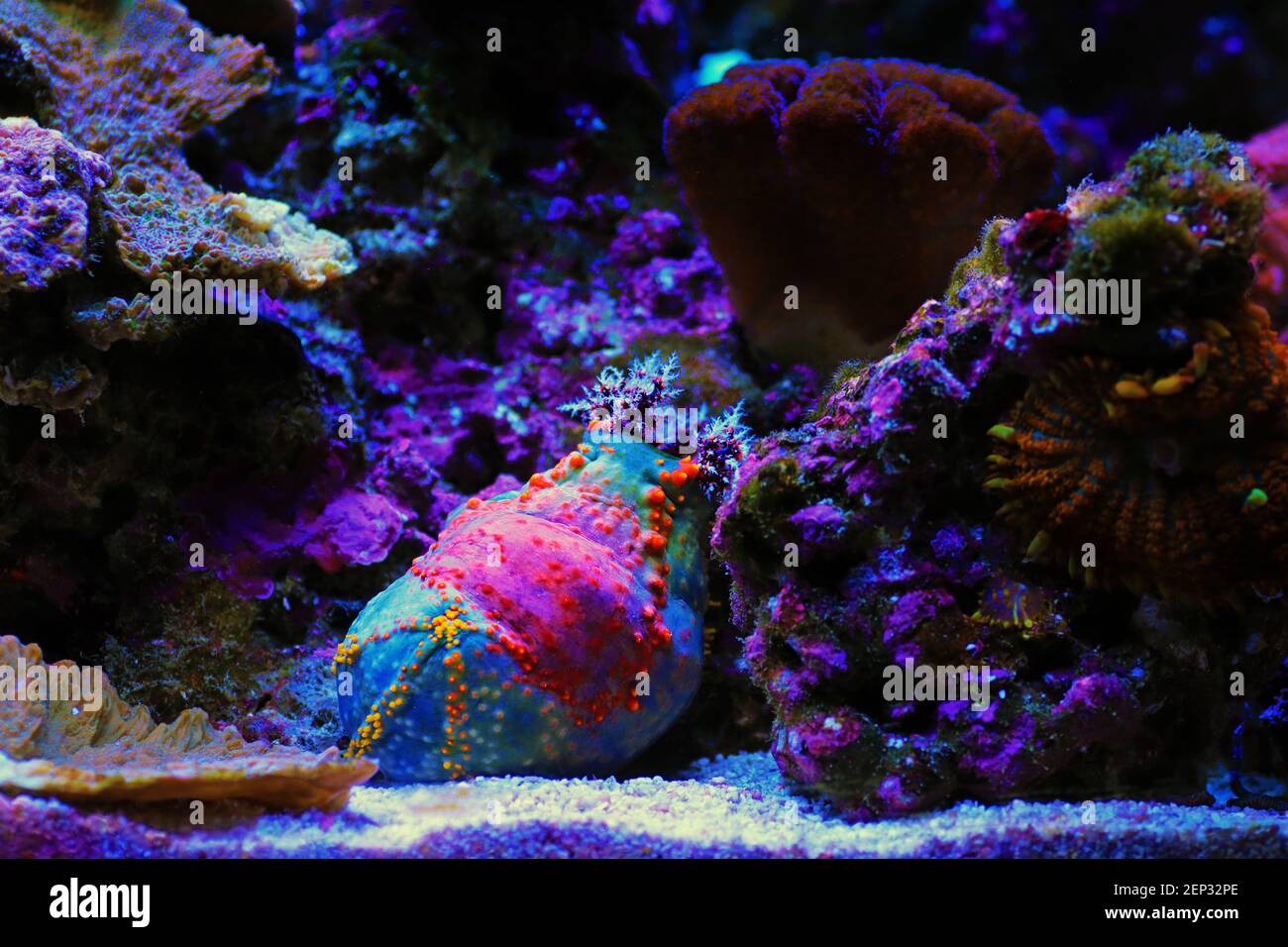
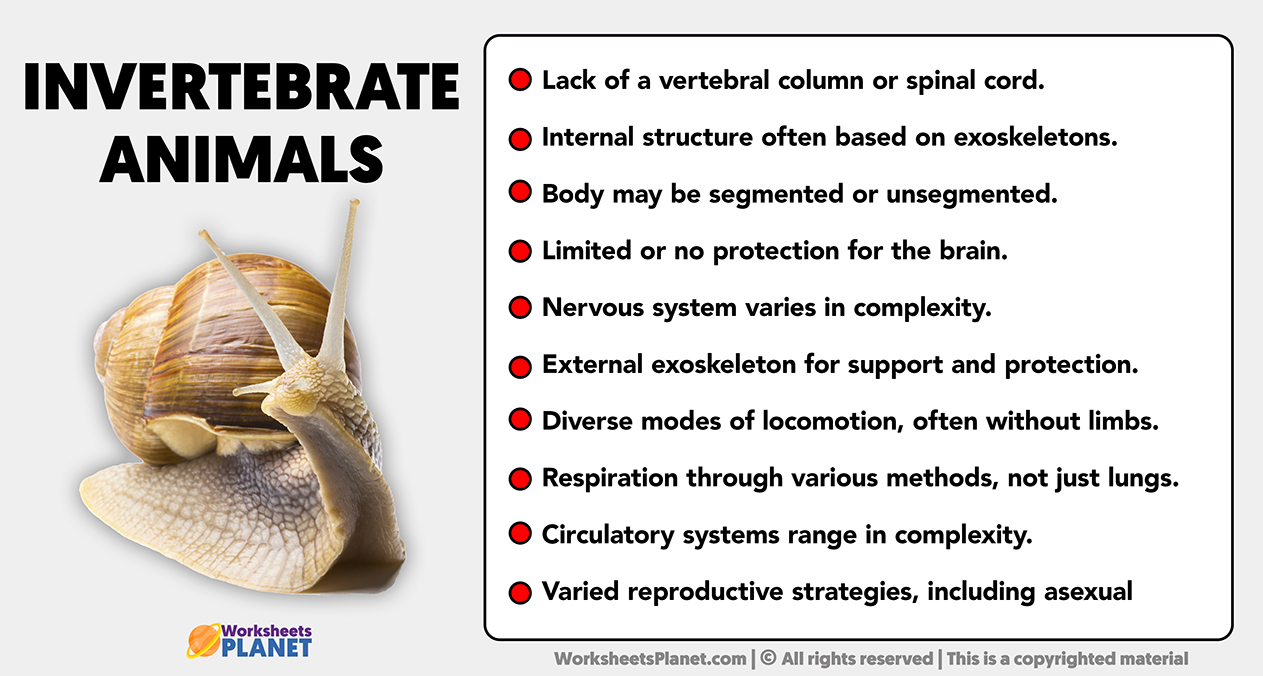
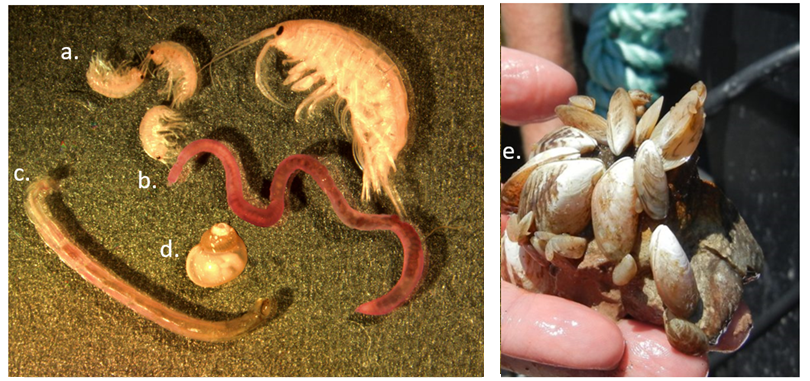

:max_bytes(150000):strip_icc()/tunicates-5c86a0cdc9e77c00010c2253.jpg)
